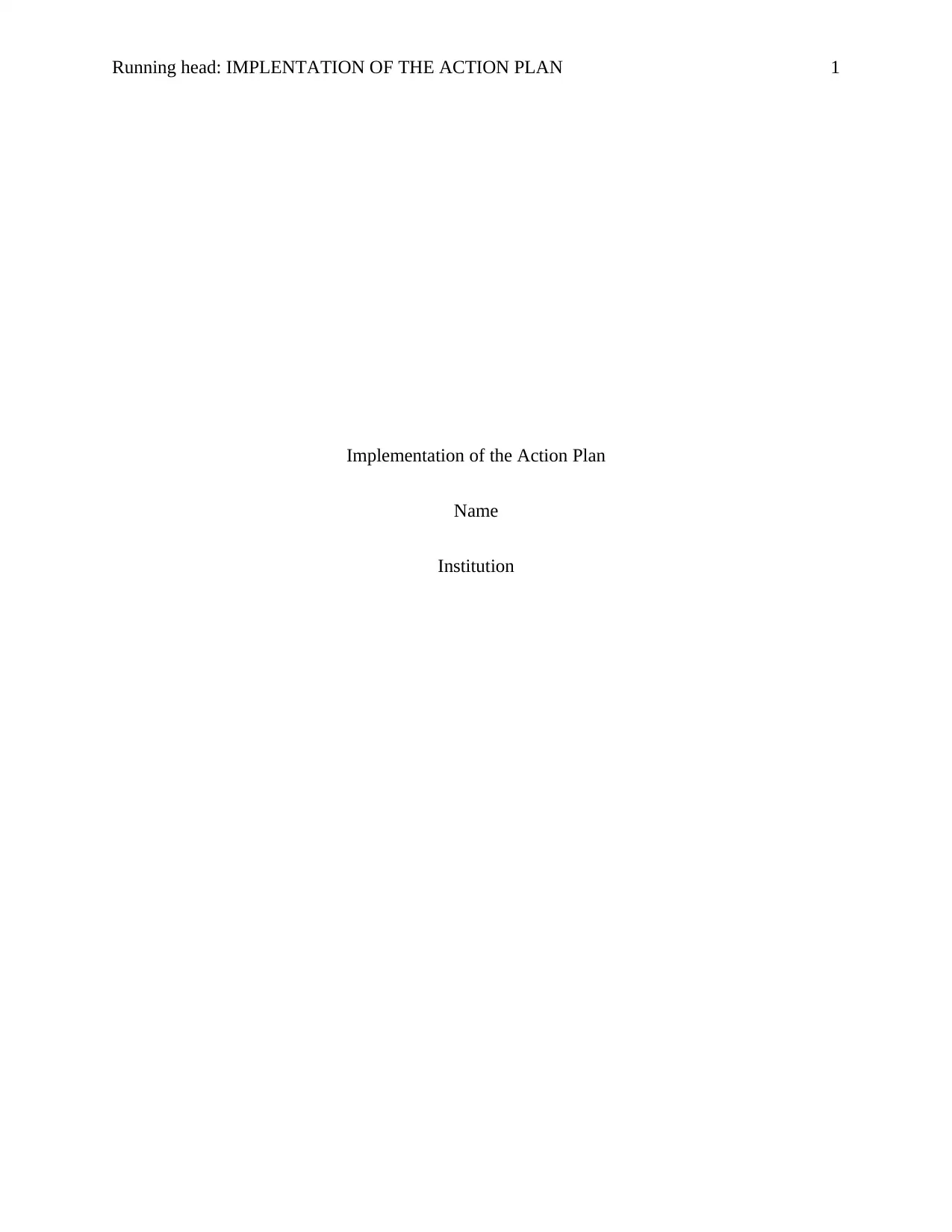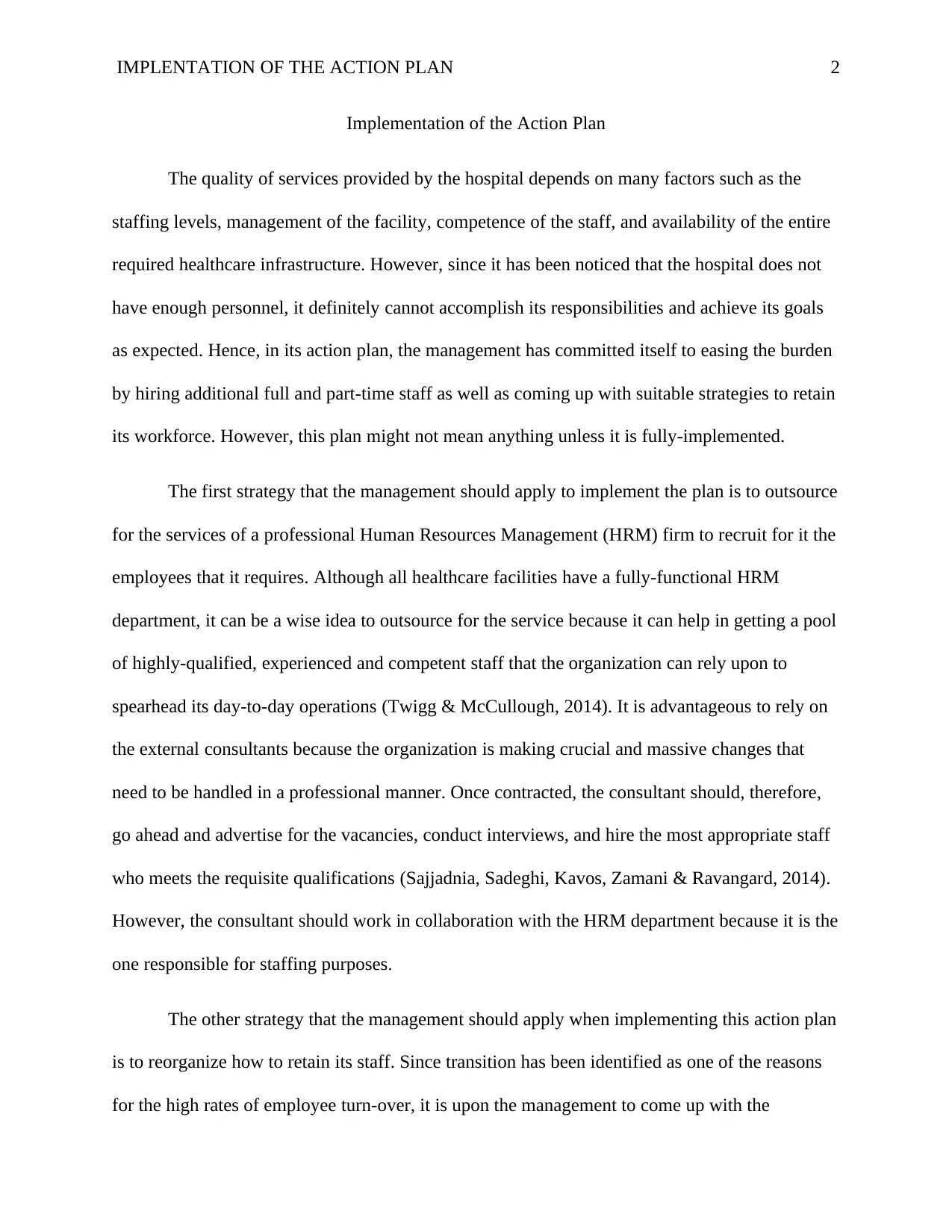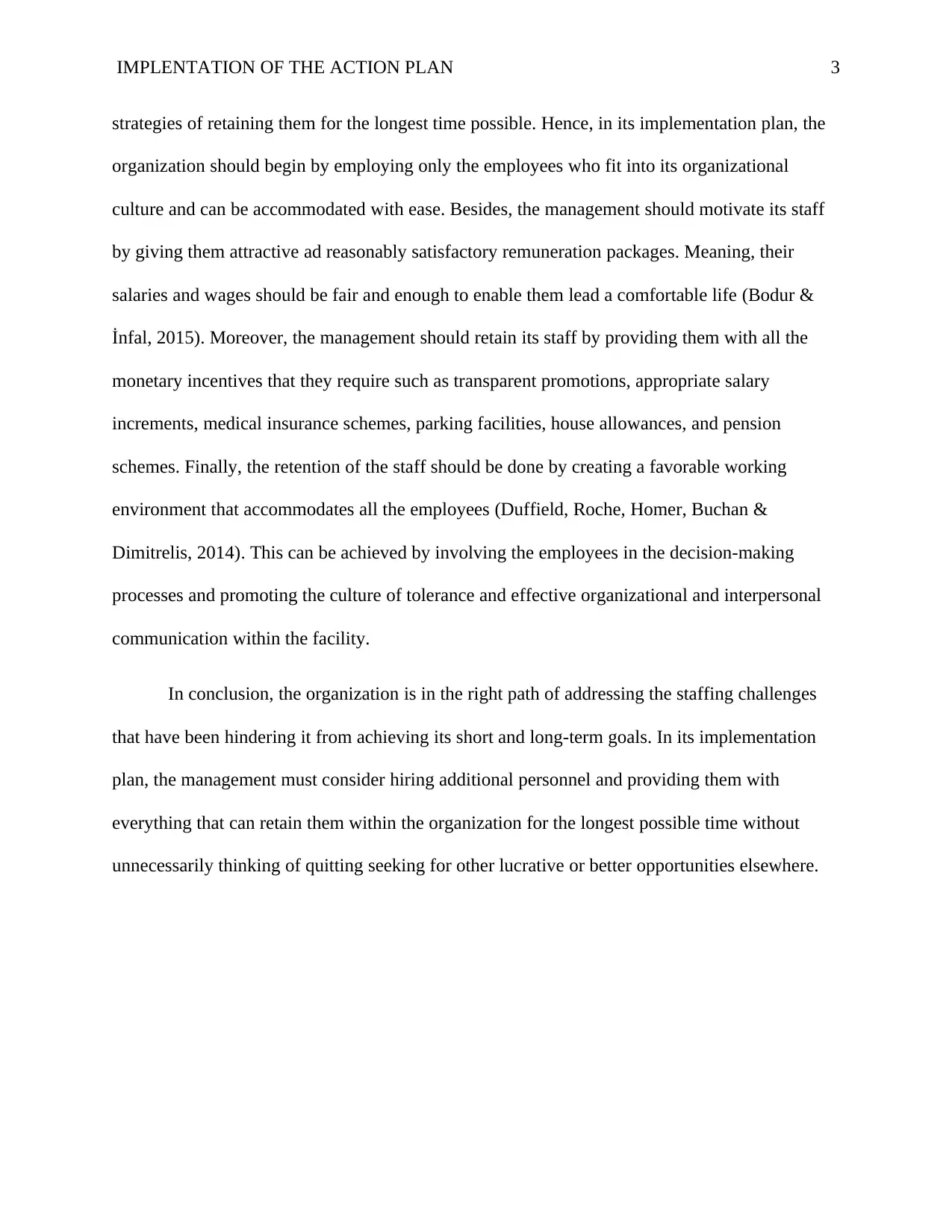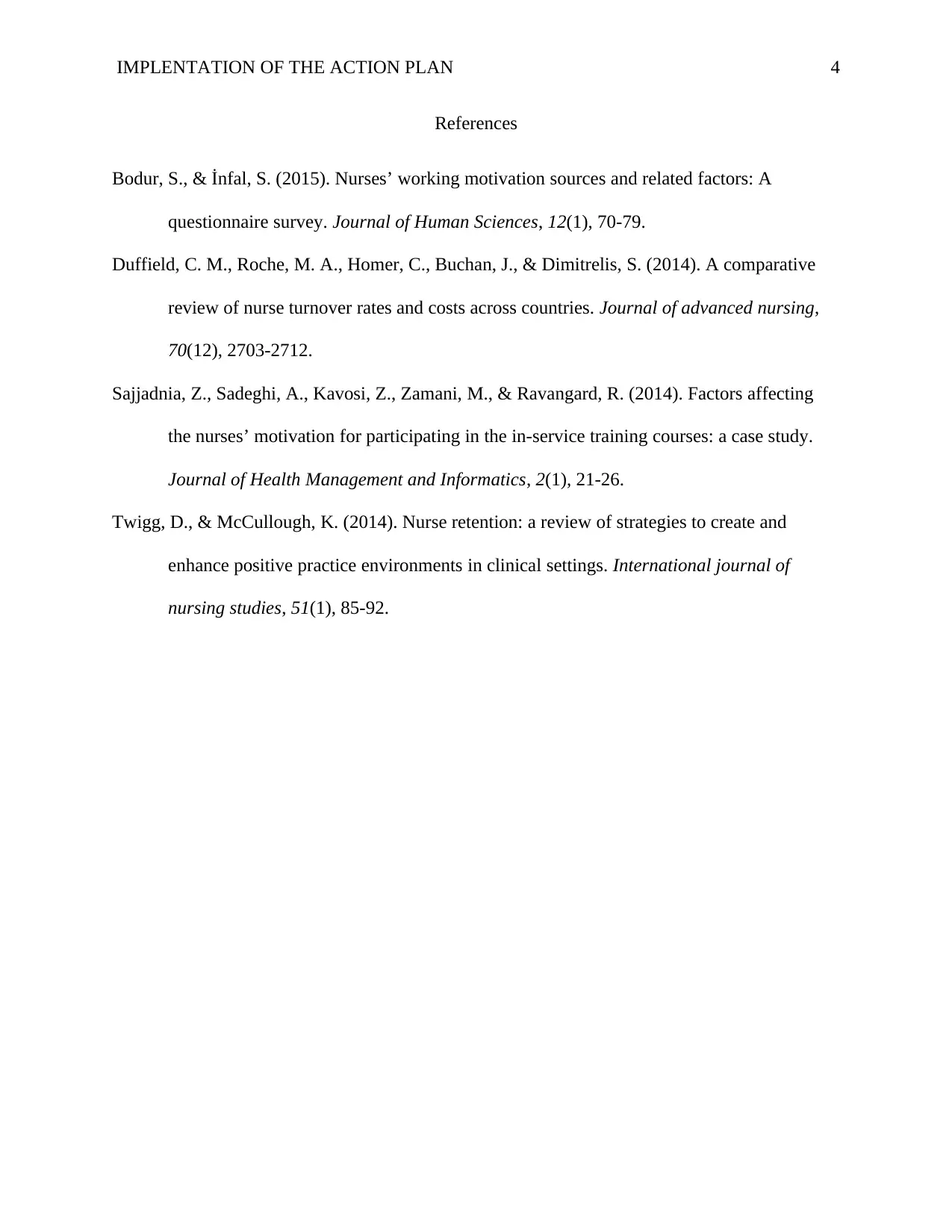NUR4455 Capstone Project: Action Plan Implementation Strategies
VerifiedAdded on 2023/06/11
|4
|839
|222
Report
AI Summary
This report discusses the implementation of an action plan designed to address staffing challenges within a healthcare facility. The plan focuses on hiring additional full and part-time staff and developing strategies for employee retention. Key implementation strategies include outsourcing recruitment to a professional Human Resources Management (HRM) firm to acquire highly qualified personnel and reorganizing staff retention methods. The report emphasizes the importance of hiring employees who fit the organizational culture, offering competitive remuneration packages with monetary incentives like promotions, salary increments, and comprehensive benefits. Creating a favorable working environment through employee involvement in decision-making and promoting effective communication are also highlighted as crucial for retaining staff and achieving the organization's short and long-term goals. Desklib provides access to this and many other solved assignments for students.
1 out of 4










![[object Object]](/_next/static/media/star-bottom.7253800d.svg)